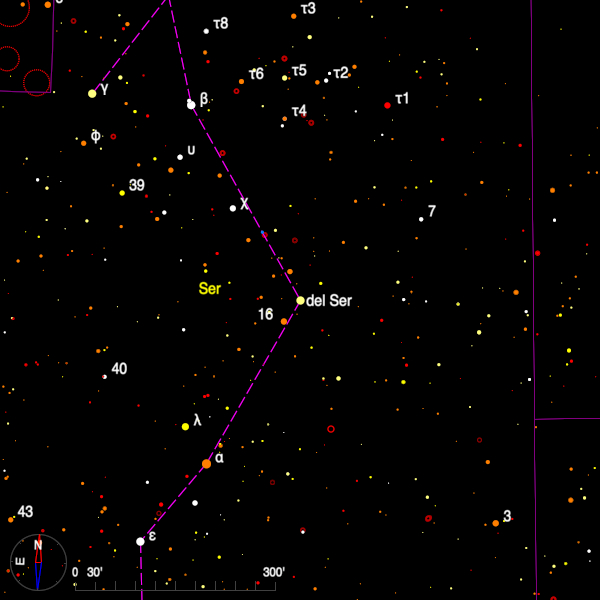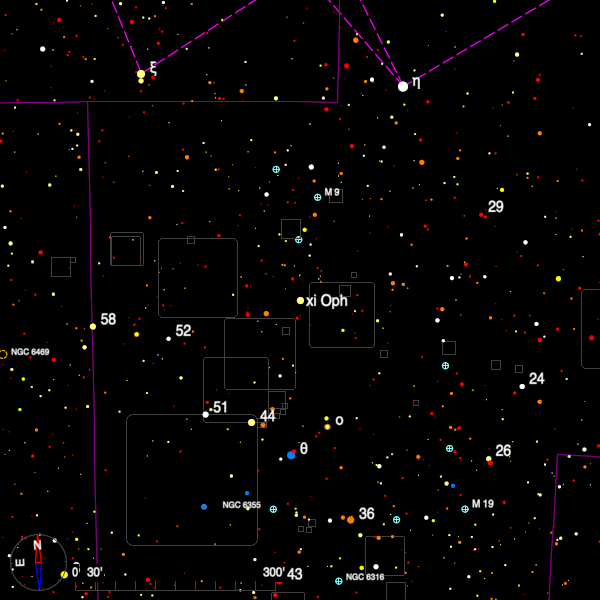July 2022 - Double Star of the Month
Delta Serpentis (15 34 48.14 +10 32 20.0) is a bright, easy, and attractive pair in small apertures. It lies in a rather undistinguished part of the sky below Corona Borealis and a quick way to find it is to locate alpha CrB and then move 16 degrees south in declination.

Since it was found by Herschel in 1782, when he noted that it was a fine double star with colours of white and greyish, it had been slowly widening until about 2020 since when it has begun to close.
Looking at the apparent orbit, there is no question that this is a binary system and yet Gaia EDR3 puts the stars at 302±14 and 172±1 light-years respectively for the primary and secondary components. Neither of these stars appears in the Hipparcos catalogue and the large error for the primary star suggests that it may be a system of higher multiplicity. The plot of the apparent orbit in the Washington Double Star (WDS) Sixth Orbit Catalogue shows rather large errors on the earlier observations of this pair which are difficult to reconcile with the ease of measurement that such a system should present, again possibly evidence for an oscillation in the movement of one of the stars.
I have made eight sets of mean measures since 1993 and the separation has ranged between 3.94 to 4.43 arc-seconds. The orbit gives 171 degrees 4".0 for mid-2022.
H.F. Donner was a student at the University of Michigan when he was sent out to South Africa to assist Robert Rossiter with the survey for southern double stars at the Lamont-Hussey Observatory in Bloemfontein using a 27-inch refractor. He stayed for 6 years and accumulated a total of 1030 new pairs, many of which are faint and close. Xi Ophiuchi (17 21 00.37 -21 06 46.5) is number 832 in his catalogue of discoveries.

The primary magnitude is V=4.4 and companion V=8.9. This is a difficult pair for the small aperture and probably needs at least 15-cm to see distinctly. The current separation is only 1".7 with the corresponding position angle 20 degrees. A orbit was calculated with a period of 421.5 years which is clearly rather premature since the motion since discovery amounts to only 40 degrees.
There is a very faint star at 261 degrees, 11" which is K=13.7 and was discovered during an imaging survey for exoplanets with the 200-inch reflector, but it remains unconfirmed and there is no subsequent astrometry.
Bob Argyle - Double Star Section Director